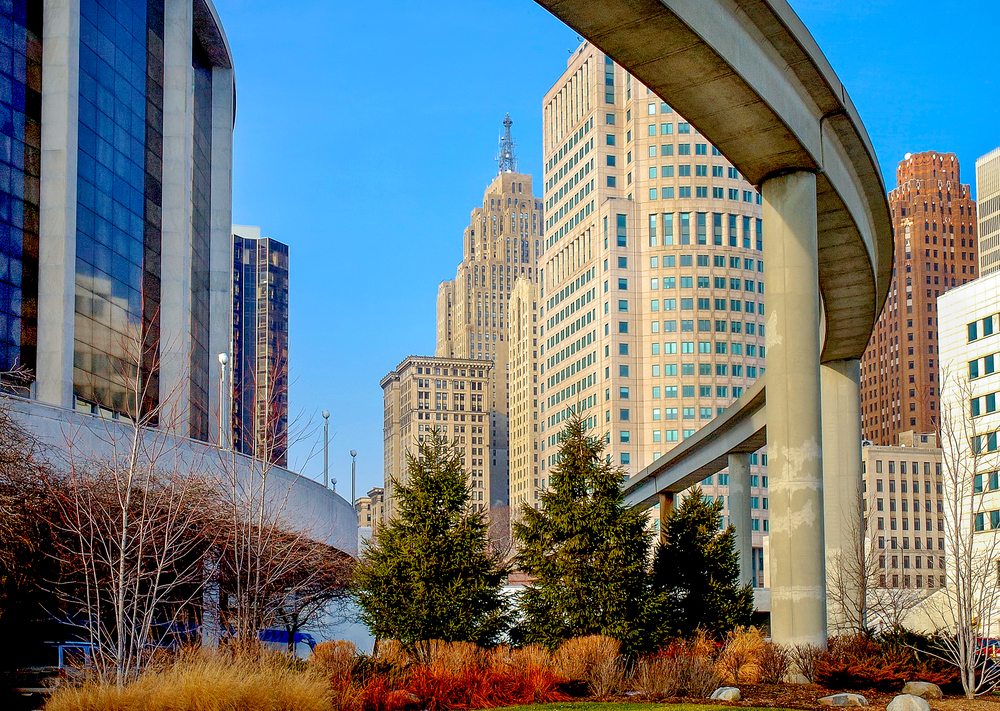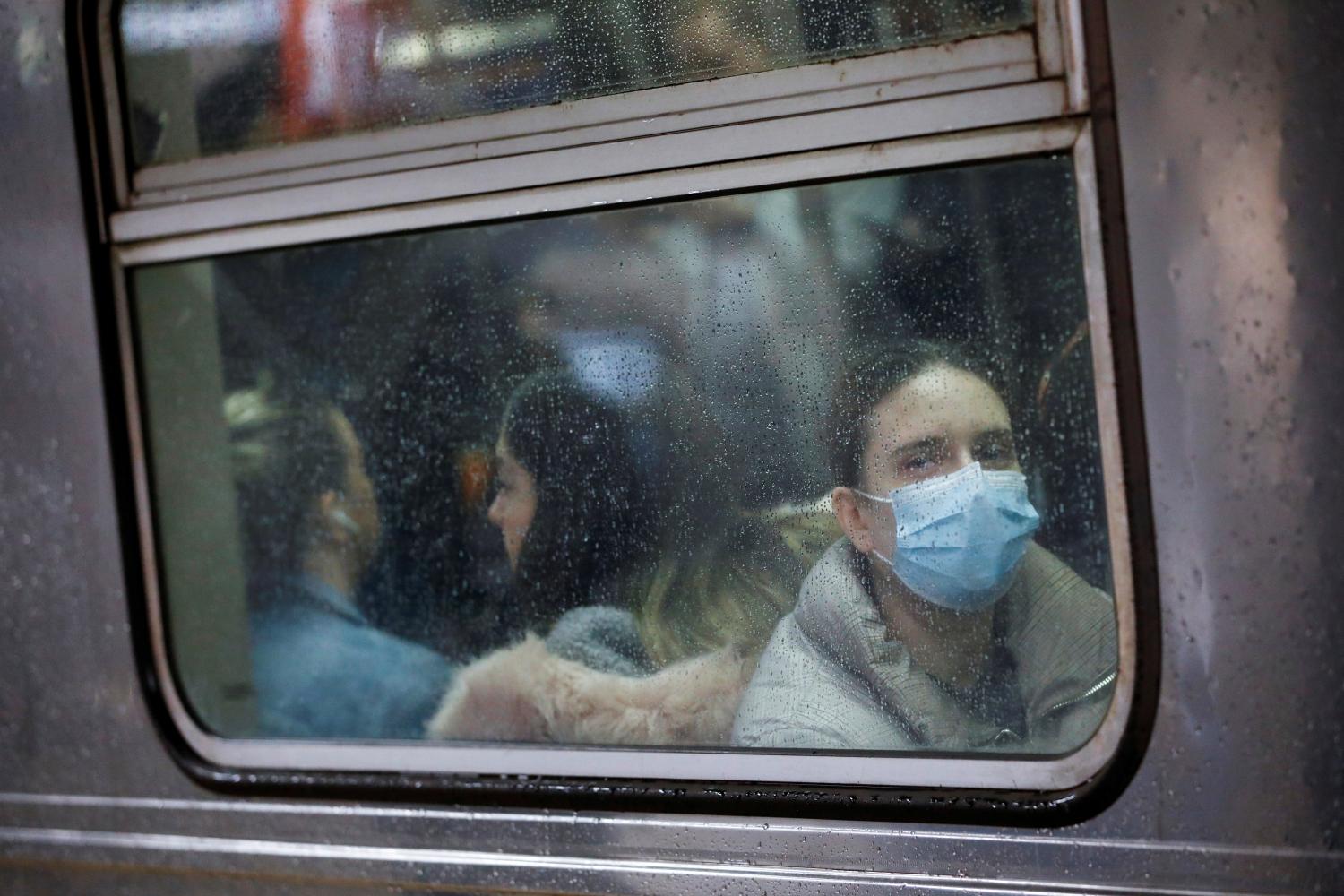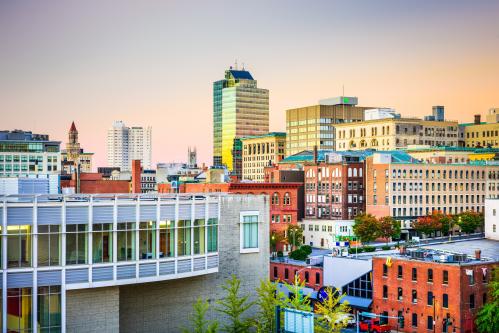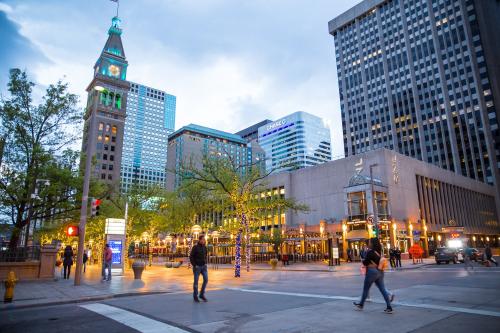Legacy cities have always held a central place in the U.S. economy, and their fates remain intricately tied to the national interest. Also known as “older industrial” cities, these are places like Detroit, Cleveland, St. Louis, Pittsburgh, and Buffalo and Rochester, N.Y. Historically, these industrial cities were America’s critical urban economic drivers. But today, with economies rooted in the declining manufacturing sector, they have suffered decades of population loss and are afflicted with egregiously high unemployment, poverty, and vacancy rates, as well as low income levels.
Now, the COVID-19 pandemic is creating a whole new set of challenges for America’s legacy cities. Putting these places on the road to recovery and prosperity is key to mitigating harmful regional imbalances in the U.S. economy, and their demographic legacies make them linchpins in the country’s efforts to achieve greater racial equity. Ensuring prosperity in these cities will not only yield economic benefits for our nation but also advance social progress.
Even though COVID-19’s devastating impact is likely to be severe and long-lasting in legacy cities—particularly for minority communities—these places entered the crisis arguably better positioned to weather the storm than in previous decades. Promising, new collaborative local efforts and leadership can make a difference in whether and how legacy cities recover from this crisis and emerge stronger on the other side.
Why legacy cities could be hit harder than other places
Legacy cities are likely to suffer more deeply from the COVID-19 pandemic. They have high concentrations of residents vulnerable to the disease itself, due to underlying health conditions, inadequate access to good health care, and other environmental factors. Legacy cities also have fragile economies with long-standing structural weaknesses that expose them to more severe initial impacts and complicate their path to recovery.
For instance, as an urban center with a high-risk population, Detroit was an early “ground zero” for COVID-19 infections and deaths. Although showing signs of recovery, the pandemic’s early economic impacts on Detroit and similar places is staggering—and in most cases, more severe than those occurring in other metropolitan areas (Table 1).

There are several reasons that the continuing impacts of the crisis may be more acute in legacy cities and the road to recovery more challenging:
First, these cities started from a weaker economic baseline than other places, with a higher percentage of their population having only a precarious connection to the economy. Despite some recent progress, many headline indicators for legacy cities remained bleak even before the pandemic.
Second, this weak baseline reflects and is exacerbated by deep racial and spatial inequities and histories of racial discrimination. People of color, particularly Black Americans, make up a significant portion of legacy city populations. Racial inequities are deeply embedded in these cities, with continued disparities in access to quality education, jobs and career advancement, and middle-income neighborhoods.
Third, lack of economic growth, unequal access to opportunity, and stressed local budgets have contributed to substantially weaker systems in areas such as education, workforce training, small business support, and basic public services for legacy cities. Legacy cities are saddled with inherent fiscal problems that will exacerbate their entry into—and exit from—the current economic crisis, due to many years of underinvestment in financial, employment, and other fundamental systems that contribute to a vibrant and resilient local economy. Small business support services (e.g., loans, technical assistance, etc.) for minority and women owners are fragile in the best of times.
Fourth, the specific impacts of this crisis on higher education, medical centers, cultural institutions, and retail/restaurant corridors imperil—at least in the short term—many of the core and emerging assets of legacy cities. Prosperous legacy industries (e.g., steel, auto) have left behind stellar higher education and cultural institutions, medical centers, and commercial corridors in their cities. These assets have anchored recoveries across these places, but many have been severely affected by the crisis.
Fifth, before the crisis, these cities faced structural challenges related to growing automation, which the downturn may accelerate. Legacy cities have higher shares of jobs in occupations and industries more susceptible to automation, unlike non-legacy cities that have high concentrations of white-collar, high-tech workers.
Legacy cities’ unique advantages during times of crisis
Despite the challenges outlined above, legacy cities still have several advantages that may help them rebound from this crisis:
First, legacy cities had more economic momentum entering this crisis than prior to the Great Recession, thanks to a longer period of growth preceding it and a stronger commitment to investing in core cities and neighborhoods. While economic progress has been uneven from city to city, legacy cities gained ground in the last decade. Unemployment rates declined in legacy cities over the last 12 years, often by more than the U.S. average (Table 2). Legacy city downtowns are seeing a surge in condo construction and repopulation after decades of decline, with an uptick in 25- to 34-year-old college-educated residents (Table 3). Meanwhile, public-private-philanthropic partnerships are making targeted, place-based investments in inner city neighborhoods.

 Second, there is greater public awareness that economic momentum was not shared equally by race and place. Prior to COVID-19, it was clear that the positive trends of increasing property values, rising income, and new jobs in legacy cities were not equally benefitting all long-term residents, particularly communities of color. The recent explosion of national attention to race issues seems likely to force a further reckoning with these economic inequities. While they are unlikely to address structural issues, collaborative philanthropic investments are forming to expand economic opportunity through job creation and support for minority- and women-owned small businesses, acknowledging the glaring need to address these inequities.
Second, there is greater public awareness that economic momentum was not shared equally by race and place. Prior to COVID-19, it was clear that the positive trends of increasing property values, rising income, and new jobs in legacy cities were not equally benefitting all long-term residents, particularly communities of color. The recent explosion of national attention to race issues seems likely to force a further reckoning with these economic inequities. While they are unlikely to address structural issues, collaborative philanthropic investments are forming to expand economic opportunity through job creation and support for minority- and women-owned small businesses, acknowledging the glaring need to address these inequities.
Third, the devastating impacts of the Great Recession on many of these communities gave rise to unique public-private-civic collaborations and bolstered their culture of resilience. The economic momentum of the last decade—while still wholly inadequate to produce truly shared prosperity—did enable some local leaders to begin to transcend a long-standing scarcity mindset that often prevented collaboration. Furthermore, legacy city residents and leaders are well-known for their “grit,” pride in place, and passion for their communities, allowing them to forge strong community ties in which neighbors and communities help each other out. These leaders and experiences could even provide models for other, more prosperous cities that are less experienced in combatting severe economic challenges.
The role of collaboration in legacy cities’ recovery
While the outlook may seem bleak, unique opportunities to build on past momentum and forge a racially equitable recovery are emerging. Local innovation—along with state and federal policies and supports—and a promising new generation of local leaders can drive such a recovery.
Ultimately, collaborations represent the key assets that legacy cities can—and must—draw from right now. Systemic changes to entrepreneurial ecosystems, for example, are a heavy lift in the best of times. However, a new small business loan and technical assistance fund was recently launched in Buffalo, N.Y. by a funders’ collaborative reacting to the dire economic circumstances. In this case, the COVID-19 crisis—magnified by long-overdue attention to racial disparities—provided the impetus and opening to create new entry points and capital investments for minority entrepreneurs.
On the workforce training front, a new, more collaborative dynamic between employers, workers, and training providers is emerging in legacy cities. Several innovative collaborations are underway, including employers working with community colleges to guarantee a pipeline of trained workers to fill job vacancies and a community college providing on-ramps to courses and wrap-around supports for segments of the population that might otherwise not have a chance. Some business leaders are rallying around youth apprenticeship programs that offer on-site training and short-term credentials to move up career ladders.
Now is the time for public and private sector leaders to ramp up these training models. If sustained and scaled, these collaborative and innovative funds and programs can stave off further decline and drive greater economic and social equity. Opportunities for change and reform are presenting themselves in America’s legacy cities. They are battle-tested places, with innovative and resilient populations and partnerships that can steer them through the difficult and uncertain times ahead.
The Brookings Institution is committed to quality, independence, and impact.
We are supported by a diverse array of funders. In line with our values and policies, each Brookings publication represents the sole views of its author(s).








